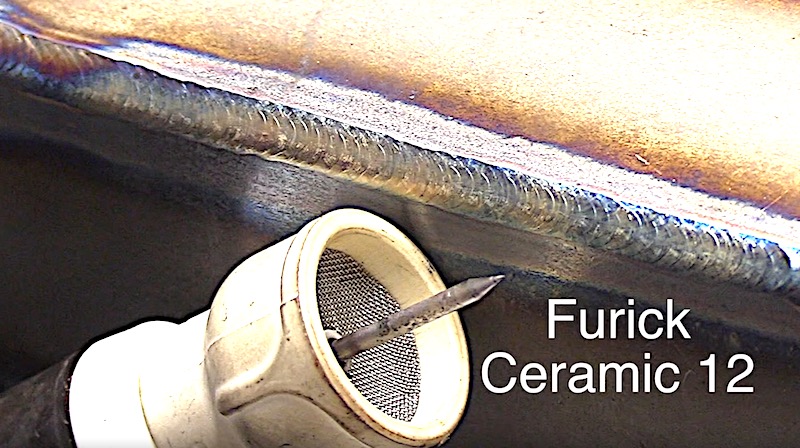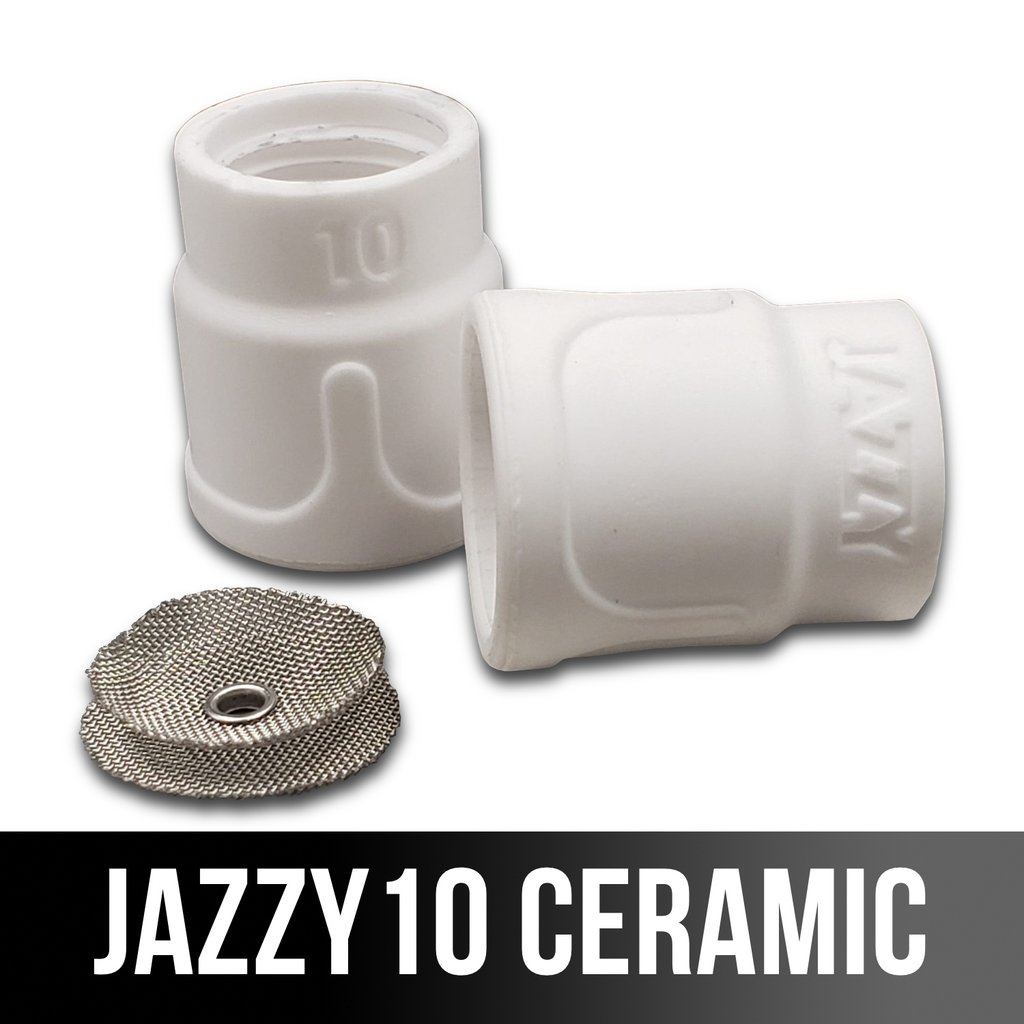Pulse TIG Welding
pulse tig vs no pulse
click image below to learn more about the furick ceramic 12 cup
Pulse settings for Silicon Bronze TIG brazing
pulse tig techniques for thin outside corner
pulse settings for edge welds at around 7:45 in this video
What’s all this fuss about pulse tig welding ?
There is some benefit to pulse tig for welding near and edge, for cosmetics, for lowering heat input and for automated tig welding applications, but what one person benefits from a certain pulse tig setting will not necessarily be the same for another welder because people weld so differently.
Will pulsing make a huge difference in my Tig Welding? Usually not. But if you are the kind of person who recognizes the benefits of having a slight edge over your competition, you will probably want to have pulse capability and learn it.
What’s the difference in high speed and slow speed pulse tig welding?
There is no one pat answer . Most people would probably say 0-10 pps is slow and anything about 10 would be high. For me I either like 1 pps or higher than 30 pps
Will Pulsing make me a better tig welder?
Maybe slightly.
Would it be worth it for me to add a pulser to my tig welding machine?
Probably not. Pulser add on units are usually only capable of 0-10 pps …
First of all what is high speed pulse tig welding ...as opposed to low speed pulse tig welding?
There are inverter tig welders made today capable of pulsing as high as 5000 pulses per second so again, I ask the question what is high speed pulse tig welding.
Where is the line drawn that lets you know what is slow speed pulse and what is high speed pulse tig?
For me, it is this… One pulse per second is slow speed pulse and 30 or higher is high speed pulse.
Anything in between does not concern me because I don’t like it and I avoid it like the plague. . Simple as that.
And when I say I don't like pulse rates between 2 pps and 29, what I really mean is that I HATE it.
At least for welding steel on DC. (Aluminum is another story and mid range pulsing is not as hard to watch.)
In fact, Pulse tig welding at ranges of 10-12 has been known to make preachers cuss, monks break vows of silence, and perfectly good tig welders walk off the job and become florists.
Well…That’s what I heard anyway.
Seriously, in between 25 and 30 pps is almost tolerable but still kind of gives me a headache and eye strain.
Now that inverter tig welders are popular and dependable, I have experimented a lot with pulse ranges of 30-500 pps and have come to this conclusion...
There are definitely benefits to using high speed pulse rates of 33 and higher.
That said...The welder..that is the person wearing the welding helmet makes more difference than the pulse rate.
There are welders that pulse manually with the foot pedal that can lay a stack of dimes that looks like artwork using an old POC Miller DialArc.
There are welders that never pulse that can lay a stack of dimes bead that looks like a machine did it using a scratch start dry rig using an antique DC stick power source.
BUT...
Usually, if you give those welders a few more bells and whistles and they really understand how to use them, the welds will be even better with slightly less overall heat input.
I read one article where a gun manufacturer estimated that they got parts 75 degrees less hot by welding...and that translated into 25% less distortion that had to be straightened on the final product.
For most people, that benefit would hardly be noticed. First of all, they measured the temperature of the part after welding with an infrared heat gun with digital readout.
How many welders do that?
Secondly, they measured the amount of distortion in the parts because they manufactured parts to tight tolerances and so it was worth it to measure everything closely.
This is where the benefits of pulsing are really noticed. In industrial situations where things are measured and inspected closely.
But you don't have to measure temperature or dimensions to notice some of the benefits of high speed pulse tig welding.…Welding near an edge will show you the benefits quickly.
Here are some settings I use for welding near an edge.
* Amperage set to roughly twice what I would set it to without using pulse (remember, you get an average of the high and low pulse amperage settings and your output will be less with pulse)
* I like pulse frequency set to 39 (I like that number because it's easy to remember)
* % on time also called pulse ratio set to about 30
* Background current set to about 30
I found these setting to work great for welding near an edge, for filling a hole in sheet metal, or for weld build up of a thin edge.
Changing the pulse frequency to 1 pps and leaving the other settings alone let me lay a nice stack of dimes bead on thick stainless whether I left the rod in the puddle or dipped on the high pulse.
PS
Here is what high speed pulsing does for you…
· focuses the arc,
· lets you move the puddle faster
· shrinks heat affected zone…(sometimes)
· agitates the puddle to move it at a lower heat
· helps confine the puddle
· prevents puddle size from growing as metal heats up
· helps welding near an edge or directly on an edge


















